-
Melting ice sheet could release frozen cold war-era radioactive waste
Camp Century, a U.S. military base built within the Greenland Ice Sheet in 1959, was decommissioned in 1967, and its infrastructure and waste were abandoned under the assumption they would be entombed forever by perpetual snowfall. But climate change has warmed the Arctic more than any other region on Earth, and as portion of the ice sheet covering Camp Century melt, the camp’s infrastructure will become exposed, and any remaining biological, chemical, and radioactive waste could re-enter the environment.
-
-
Ex-Treasury official: Hezbollah has turned Lebanese villages into missile silos
Hezbollah has embedded its rocket arsenal in villages across Lebanon, ensuring that any Israeli strike on the Iran-backed terrorist group’s military assets will lead to mass civilian casualties, a former Treasury official said on Monday. Hezbollah has turned the Shiite villages “into essentially missile silos,” Jonathan Schanzer said. “What you have is rockets placed under homes, schools, apartment buildings, etc., so when the Israelis need to try to strike these weapons before they’re launched, it will potentially lead to mass casualties.”
-
-
Report: Next war with Hezbollah could cause “thousands of civilian deaths” in Israel

Israeli officials believe that a future war with Hezbollah, with its advanced Iranian-supplied rocket arsenal, could lead to “thousands of civilian deaths,” according to a new study. Hezbollah is now believed by Israel to possess about 150,000 rockets, which exceeds the combined arsenals of all non-U.S. NATO countries and is ten times larger than its arsenal before the 2006 war.
-
-
The future of naval force and RoboBoats
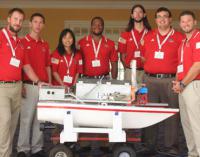
The future of naval engineering was on display earlier this month, as thirteen teams of high school and college students did battle at the ninth annual RoboBoat Competition in Virginia Beach, Virginia. The competition is a robotics contest where teams program their student-built autonomous surface vehicles to navigate through a series of water-based challenges.
-
-
10 years after Second Lebanon War, Israel concerned next round will be far worse
On the ten-year anniversary of the beginning of the Second Lebanon War, Israeli officials continued to warn that any future conflict with Hezbollah will result in unprecedented damage to the group. A senior IDF official said that the difference between the next war and 2006 “will be the difference between an operation and a war. 2006 was an operation, and we didn’t use all of our power. Next time it won’t just be planes flying around. … We will use all of our power to destroy Hezbollah militarily.”
-
-
New method helps identify chemical warfare agents
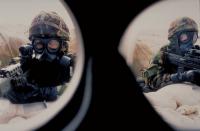
Chemical warfare agents are powerful noxious chemicals that have been used as weapons of mass destruction. Finding trace amounts of a chemical warfare agent in a sample can be challenging, especially if the agent and the liquid it is in are both water-repellant, which is often the case. A new method for extracting, enriching, and identifying chemical warfare agents from oils and other organic liquids could help government officials and homeland security protect civilians more effectively from their deadly effects. The method uses nanoparticles to capture the chemicals.
-
-
ISIS using drones with explosives, spy cameras: Pentagon
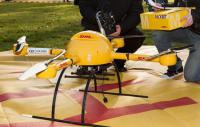
The Pentagon says that ISIS fighters are have been posing a growing threat to U.S. and Iraqi forces by using small commercial drones to carry improvised explosives devices (IEDs) or surveillance cameras. These drones are especially threatening because they can evade detection. The growing threat led the Joint Improvised-Threat Defeat Agency, the Pentagon’s office charged with keeping tab on and countering IEDs, to ask Congress for permission to reallocate $20 million to provide money for a counter-drone program.
-
-
Iran’s use of civilian planes to arm Assad could jeopardize $25B Boeing deal
The $25 billion aircraft deal that Boeing recently struck with Iran could be jeopardized by Tehran’s continued support of Syrian dictator Bashar al-Assad. Boeing’s jets will be sold to the state-owned Iran Air, which was sanctioned by the Treasury Department in 2011 partially due to its transport of “potentially dangerous Islamic Revolutionary Guard Corps (IRGC)-related cargo” and “missile or rocket components” to Syria. A Western intelligence report seen by Reuters in 2012 noted that Iran continued using civilian aircraft to transport large amounts of arms and personnel to aid Assad.
-
-
Losing control: The dangers of killer robots
New technology could lead humans to relinquish control over decisions to use lethal force. As artificial intelligence advances, the possibility that machines could independently select and fire on targets is fast approaching. Fully autonomous weapons, also known as “killer robots,” are quickly moving from the realm of science fiction toward reality. While the process of creating international law is notoriously slow, countries can move quickly to address the threats of fully autonomous weapons. They should seize the opportunity presented by the Convention on Conventional Weapons review conference, to be held this December, because the alternative is unacceptable: Allowing technology to outpace diplomacy would produce dire and unparalleled humanitarian consequences.
-
-
Former IDF general: Hezbollah could fire 1,200 rockets daily into Israel during next war
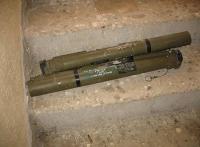
A former IDF general warned Israelis earlier this week that the next war with the Iran-backed Lebanese terror organization Hezbollah would lead to a barrage of rockets into Israel on an order of magnitude higher than anything Israel has yet faced. Major General (res.) Yitzhak Gershon said that the 2006 war between Israel and Hezbollah featured up to 160 rockets per day fired at Israel’s north. But given Hezbollah’s military buildup, “we need to expect up to 1,200 rockets in a day– it will be a completely different scenario from anything we’ve known.”
-
-
Report: Hezbollah has more rockets than 27 NATO countries combined
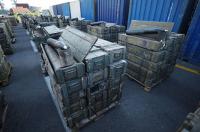
Any future war between Israel and Hezbollah will take a devastating toll on civilians due to the Iran-backed terrorist group’s practice of embedding its military assets in residential areas, military analysts say. Hezbollah currently has a stockpile of over 130,000 rockets, more than the combined arsenal of all NATO countries, with the exception of the United States.
-
-
Global small arms trade reached $6 billion in 2013
The Small Arms Survey’s Trade Update 2016: Transfers and Transparency reports that the world’s “top” and “major” small arms exporters delivered at least $5.8 billion worth of small arms in 2013, an increase of 17 percent compared to the $5 billion worth exported in 2012. The United States exported a record $1.1 billion worth of small arms in 2013. Transfers of small arms to the United States ($2.5 billion) alone accounted for 42 percent of all imports.
-
-
ISIS conducting chemical experiments on its prisoners
In the ace of sustained attacks by coalition forces, ISIS has moved its chemical weapons labs to densely populated residential areas in Mosul — and is testing homemade chlorine and mustard gas on its prisoners held in different facilities in and around the city. ISIS has been working in chemical weapons for a while, relying on the expertise of scientists who served in the chemical weapons complex of Saddam Hussein, but also on Europeans with chemical degrees from leading European universities.
-
-
Assad's forces use sarin gas for first time since 2013 killing of 1,400 civilians
The Assad regime has used sarin gas for the first time since 2013, dropping a sarin-filled bombs on ISIS fighters outside Damascus, a senior Israeli official has said. On 21 August 2013 the Syrian military used sarin and VX to kill 1,400 Sunni civilians in a rebel-held suburb of Damascus. In the wake of the attack, Russia and the United States pressured Assad to give up his chemical weapons arsenal and dismantle Syria’s chemical weapons manufacturing capabilities. Western intelligence services say that Assad likely disposed of his mustard and VX, in accordance with the deal, but that he chose to keep the sarin, the most lethal agent at his disposal.
-
-
DARPA Demo Day 2016: Game-changing technologies for the military services
DARPA on Wednesday hosted DARPA Demo Day 2016 at the Pentagon, providing the Defense Department (DoD) community an up-close look at the agency’s portfolio of innovative technologies and military systems. DARPA program managers and numerous academic and private-sector project leaders demonstrated their ongoing work on more than sixty current DARPA programs.
-
More headlines
The long view
Factories First: Winning the Drone War Before It Starts
Wars are won by factories before they are won on the battlefield,Martin C. Feldmann writes, noting that the United States lacks the manufacturing depth for the coming drone age. Rectifying this situation “will take far more than procurement tweaks,” Feldmann writes. “It demands a national-level, wartime-scale industrial mobilization.”
